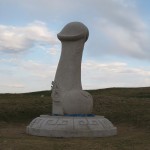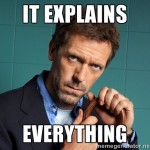Neo-Paganism is a nature religion which, like other nature religions, perceives nature as both sacred and interconnected. From this perspective, humans in the developed world have become tragically disconnected from nature, which has been desacralized in both thought and deed. Healing this rift is possible only through a profound shift in our collective consciousness. This constellation of ideas can be called “Deep Ecology”. This is the first in a 6-part series about some of “branches” of Deep Ecology. This essay was originally published at Neo-Paganism.com.

“I compare the earth and her atmosphere to a great living being perpetually inhaling and exhaling.”
— Goethe
In 1979, James Lovelock published Gaia: A new look at life on Earth, which popularized the Gaia Hypothesis, later called the “Gaia Theory”. He had been working for NASA, trying to determine whether life might exist on Mars when he had this insight. Lovelock and others who followed him, like the biochemist Lynn Margulis, envisioned the Earth as a complex self-regulating system, the various parts of which interact with each other to maintain homeostasis, the conditions conducive to life, including the stability of global temperature, ocean salinity, oxygen in the atmosphere, and other environmental variables that affect the habitability of Earth. Lovelock theorized that,
“The entire range of living matter on Earth, from whales to viruses, and from oaks to algae, could be regarded as constituting a single living entity, capable of manipulating the Earth’s atmosphere to suit its overall needs and endowed with faculties and powers far beyond those of its constituent parts.”
In other words, the totality of the Earth’s biosphere, atmosphere, oceans, and soil constitute “a feedback or cybernetic system which seeks an optimal physical and chemical environment for life on this planet.” Lovelock named his theory after the Greek goddess of the Earth, Gaia, who reproduced parthenogenically (asexually).
The Gaia Theory received a mixed response from the scientific community, but the idea took hold of the popular imagination and was embraced by many environmentalists and Neo-Pagans. Popular conceptions of the Gaia Theory include the idea that the Earth is better understood as a living being than as a machine, with the planet’s atmosphere compared to a person’s breath, the rivers and oceans compared to the circulatory system, and the biosphere as the skin. Some go so far as to literalize this anthropomorphization, treating Gaia as planetary being with the power to purposefully intervene in the course of history. The scientifically accepted form of the theory is much more limited, though, viewing equilibrium as an undirected emergent property of a complex system, the product of the self-interested pursuits of individual species. Lovelock himself is clear that Gaia is a metaphor for him, and he does not see the earth as sentient. But he has suggested that a Gaian religion of nature might replace theistic religion.
In any case, the Gaia Theory calls into question many deeply ingrained scientific and cultural assumptions and challenges us to perceive our world in a new way. For example, David Abram has explained how one of the implications of the Gaia Theory is that we can no longer think of ourselves as living on the Earth; rather we live in the Earth. As Abram writes,
“we must remember and reacquaint ourselves with the very medium within which we move. The air can no longer be considered a merely negative presence, an absence of solid things: henceforth the air is itself a density — mysterious, indeed, for its invisibility, but a thick and tactile presence nonetheless. We are immersed in its depths as surely as fish are immersed in the sea. We are immersed in its depths as surely as fish are immersed in the sea.”
The Gaia Theory also illustrates how we are radically interconnected with all other livings beings on the planet, human and other, as well as with the non-living elements of the Earth. As Lynn Margulis has explained, our existence is the result of the cooperative, symbiotic merging of earlier life forms to produce greater and greater complexity. Within every cell in our bodies there is a small life form called mitochondria, which transform chemicals into usable energy for our bodies. Without mitochondria our lives would not be possible, and without us their lives would not be possible. And yet, mitochondria are as much independent life forms as we are: They have their own DNA, their own reproductive processes, their own life cycles. Similarly, we humans carry on our lives seemingly independently of Gaia, but yet we exist within a larger living entity on which we depend for our lives.
Neo-Pagans tend to take the Gaia Theory as confirmation of a pantheistic worldview. In 1971, following a religious vision, Neo-Pagan founder Otter (now “Oberon”) G’Zel published an article entitled, “Theagenesis: The Birth of the Goddess”, in which he described a Gaia-like theory several years before Lovelock’s ideas were popularized, which suggests this idea was percolating from the collective unconscious at the time. Zell wrote: “It is a biological fact that all life on Earth comprises one single living organism! Literally, we are all ‘One.’ The blue whale and the redwood tree are not the largest living organisms on Earth; the entire planetary biosphere is.” Zell called this planetary organism “Terrebia” and identified it as a Goddess who we instinctively call “Mother Earth” or “Mother Nature”.
Some deep ecologists are critical of the New Age and Neo-Pagan appropriation of the Gaia Theory to the extent that it may foster the illusion that humans can, through science and technology, understand and control the complex system that is the Earth. Chaos theory teaches us, though, that most natural phenomena are nonlinear systems, which means that they are fundamentally unpredictable beyond the short term. The Gaia Theory should then inspire a deep humility in us in the face of a far more complex being than we are capable of fully understanding, much less controlling.















